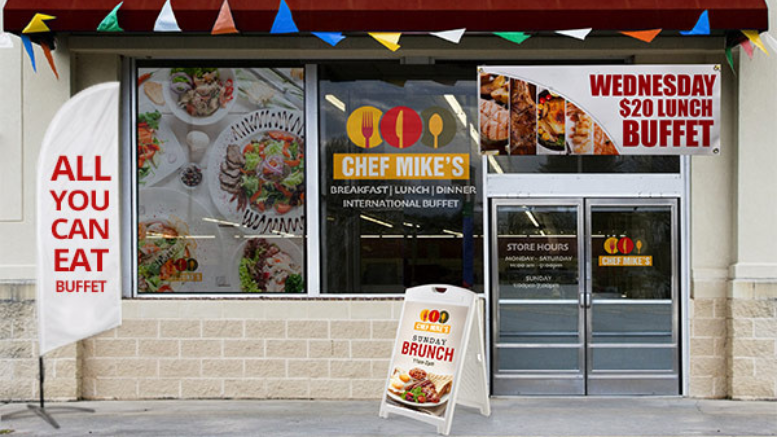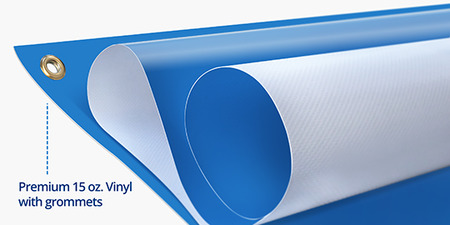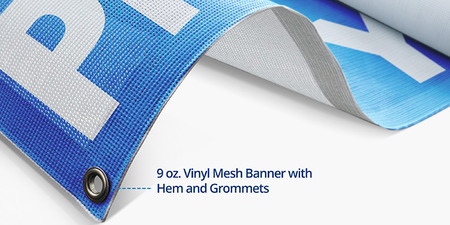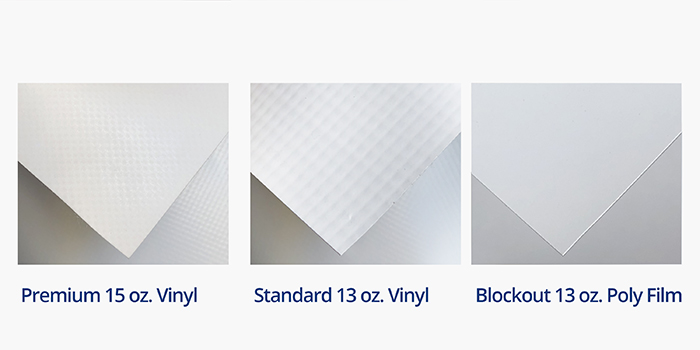The Different Types of Banners

If you ask people what a banner is, there’s a high chance you’ll get different responses. That’s what sets it apart from other forms of outdoor signage. It comes in so many forms to accommodate even the most complex preferences.
Whether you’re a newbie or a pro in banner advertising, it helps to be familiar with all your options. Below, we list down the different types of banners and the qualities that make them unique.
Related Article: Everything You Need to Know About Custom Banners
What’s Your Banner Made Of?
One way to narrow down your banner choices is to identify which banner material suits you best.
Vinyl. The majority of the banners you see outdoors are printed on vinyl. This material comes in different weights, but the most common are 13 oz. and 18 oz. Vinyl is known for its durability. Being weather and fungus-resistant, it can last up to five years outdoors with proper care and maintenance. If you’re using your vinyl banner indoors, it’ll last much longer.

Mesh. Mesh banners are also made of vinyl but they deserve a category of their own because of one special feature. Mesh vinyl has small holes that allow wind to travel through. These make mesh banners more lightweight and more resistant to extreme weather than regular vinyl. The downside is these small holes affect visibility. If this is a major concern, you can go with regular vinyl and add wind slits to the surface instead.

Fabric. Fabric banners are printed on either polyester or satin. The biggest edge of this type of banner is that it’s washable and wrinkle-free. You’ll often encounter fabric banners indoors, except for teardrop and feather flag banners.
Poly Film. Another material that you’ll encounter for banners is poly film. It’s also lightweight and wrinkle-free but is less durable than vinyl. It’s mostly used for indoor banners meant for short-term promotions like retractable banners.

There are also several accessories for displaying banners. If you plan to hang it, you can choose between grommets and pole pockets. You can even request for hems to be sewn in to make it more tear-resistant.
If you want your banner standing up, you have different frames to choose from. We’ll discuss them further below.
Choosing the Right Banner
Now that you’re familiar with the range of materials used to make banners, let’s proceed to the different banner styles.
Vinyl Banner
This is the most economical option. Vinyl offers great visibility that allows it to be readable from any angle, and it’s fade, wind, and tear-resistant. Because they’re very common, vinyl banners usually have a fast printing turnaround time.
Mesh Banner
Mesh banners are best for windy locations such as roadsides and open fields. If you’re planning an outdoor event such as a festival or a sports activity, this is your best option.
Pole Banner
If you prefer to get your banner hung on poles or mounted on the sides of your establishment’s walls, choose pole banners. This style also comes in a wide range of sizes and every order usually includes brackets.
Fabric Banner
If you want your banner to be reusable and you plan on using it mostly indoors, fabric banners are your best option. Custom tablecloths also fall under this category.
Retractable Banner
This style is a go-to among tradeshow and conference attendees. The design is printed on poly film which is attached to a lightweight aluminum base. Retractable banners are sold with a carrying case to make them easier to store and transport.
X-Stand Banner
If you prefer something more durable than a retractable banner, there’s the X-stand banner. It’s printed on vinyl instead of poly film. Meanwhile, the frame is made of sturdy plastic and fiberglass. It also comes with a carrying case.
Backdrop and Step and Repeat Banner
If you need a banner that could double as a photo wall or a booth background, you can’t go wrong with a backdrop or a step and repeat banner. The difference between the two is that a step and repeat banner is designed with patterns created from logos or other branded graphics, while backdrops usually only have a single enlarged design element. Backdrops and step and repeat banners come in a wide range of sizes, but the most common is 8′ x 8′ which can fit up to five people in a photo session.
Custom banners are proven to be a cost-effective way to promote any business, activity, product, or service. Let us know if you need more help choosing a style that suits you best!



